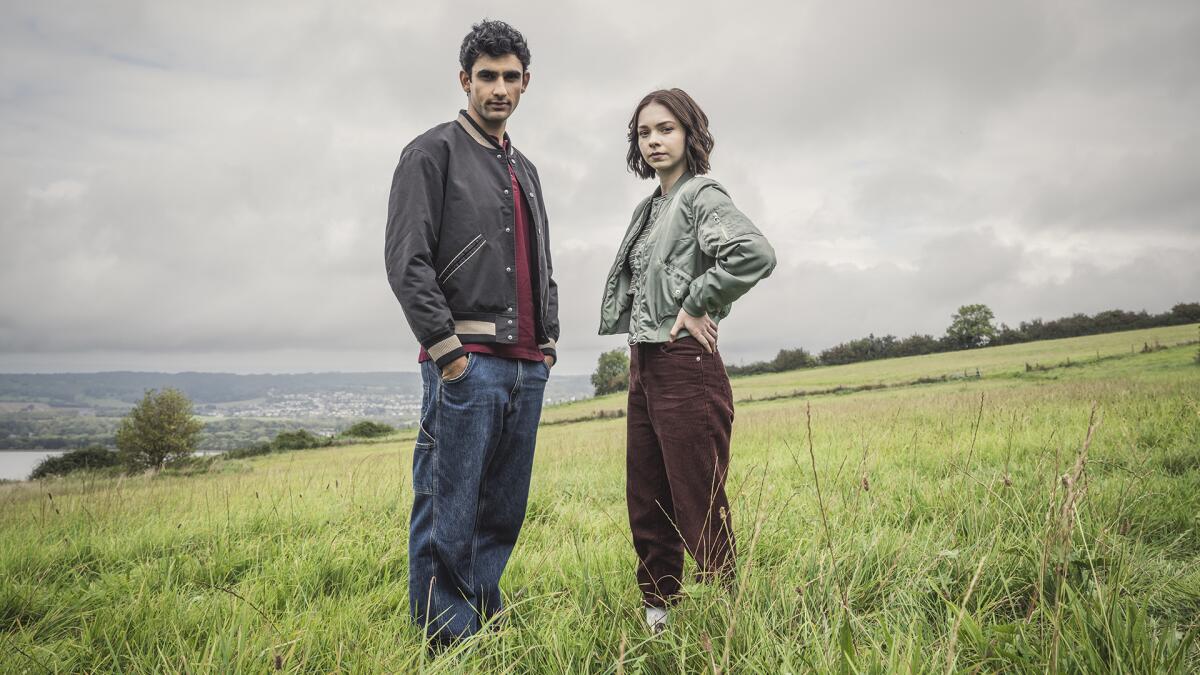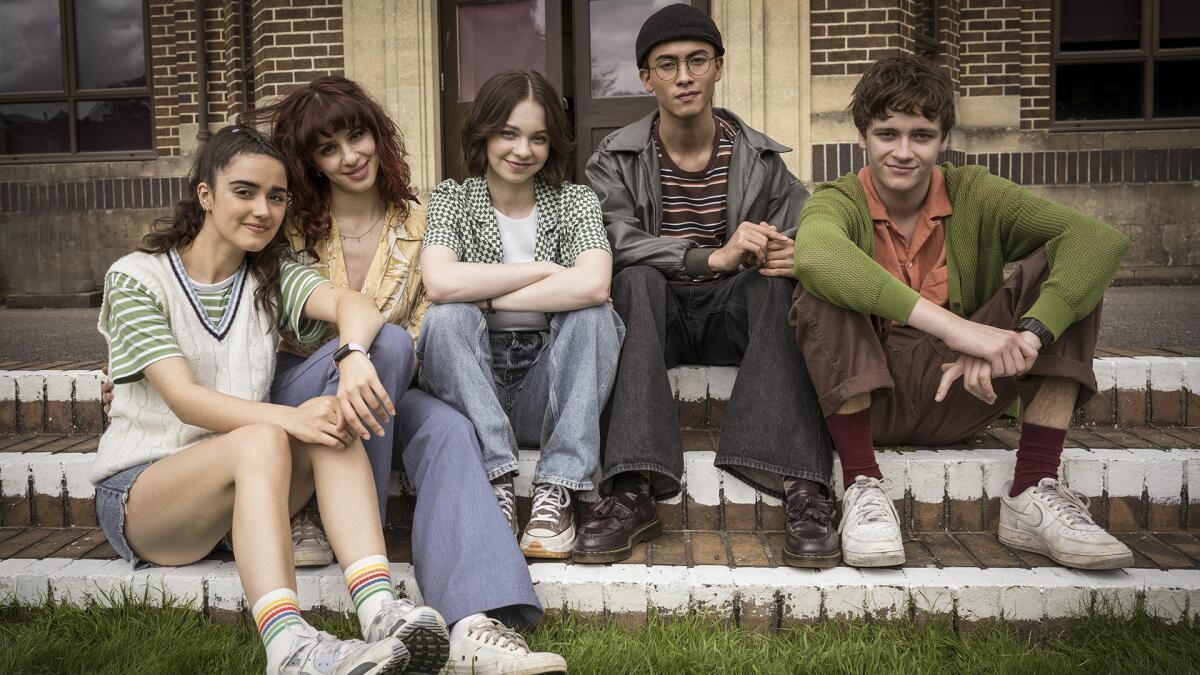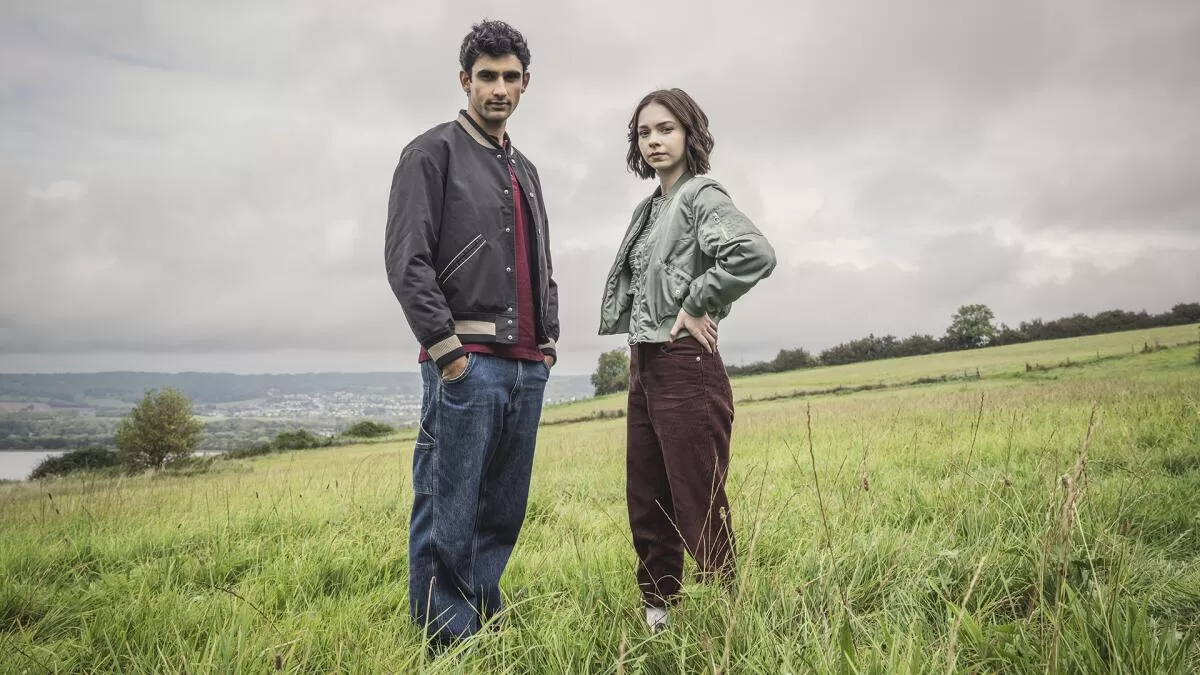As someone who grew up reading the Hardy Boys, collecting a long shelf of those beautiful blue spines, I am all about the teenage detective. Nancy Drew, “Scooby-Doo,” Shelby Woo, Hayley Mills in “The Moon-Spinners.” As for the teens and tweens such stories nominally target, that is a population into whose lives every day brings some new mystery — mysteries of the heart, mysteries of the changing body, mysteries of the weird parents, mysteries of the missing friends with apparently new friends. These stories can be empowering, like spiritual krav maga.
Adapted by Poppy Cogan from British writer Holly Jackson’s popular 2019 YA novel, “The Good Girl’s Guide to Murder,” premiering Thursday on Netflix, is an involving ride — not so much for the plot as for the characters (which is how all detective stories live or die) and a great performance by Emma Myers (“Wednesday”) as its central sleuth, Pippa Fitz-Amobi. It’s less whimsical than the title might lead one to expect, but short on grit and long on feeling.
We are in Little Kilton, a picturesque English village, the sort of place where, sayeth Miss Marple, “you turn over a stone and have no idea what will crawl out” — and Miss Marple is rarely wrong. Five years earlier, the town was roiled by the disappearance of teenager Andie Bell (India Lillie Davies) and the confession and apparent suicide of her boyfriend, Sal Singh (Rahul Pattni). Though the villagers seem intent on leaving the past in the past, there is also a big mural honoring her and what looks like a steady stream of flowers and mementos marking the shrine. So that book is not entirely closed.
Pippa or Pip, now a senior herself, remembers seeing Andie and Sal on the day of her disappearance, and also that Sal was always nice to her; she doesn’t think he’s someone who could kill anyone, and for her senior project, or under cover of same, has decided to investigate the case.

Ravi (Zain Iqbal) steps in to help Pip (Emma Myers) solve the mystery of Andie and his brother, Sal.
(Sally Mais/Netflix)
This connects her with Ravi (Zain Iqbal), Sal’s younger brother, who, like everyone but Pip, accepts the accepted verdict; at least, he has put it behind him, until Pip gets him interested, and together they turn sleuth — he calls her “Sarge,” as in detective sergeant, and they spar over who’s Holmes and who’s Watson, or more specifically, who’s Cumberbatch and who’s Freeman. But it’s clearly Pip leading the way.
Pip turns her bedroom wall into a murder board, pasted with clippings and photographs and various notes to self. (It takes her mother a while to notice this.) Across six 40-minute episodes, she moves about the town, from garden party to rave to locker room, as her “project” morphs from schoolwork to amateur police work. Threatening notes and texts arrive warning her to “stop digging.” But she has also has reason to question her own motives.
“I’m just trying to find out the truth,” Pip tells Andie’s lookalike sister Becca (Carla Woodcock).
“It’s not about the truth,” Becca replies. “People act like this stuff is for the dead person, but it’s not, it’s for them.”
As the title indicates, Pip’s a good girl, who doesn’t exactly go bad, but she will lie to her parents (Anna Maxwell Martin and Gary Beadle), ignore their orders, do shots in exchange for information and commit a fair amount of breaking and entering — entering, anyway — in order to find clues and steal evidence. Which, frankly, is good training to be a detective in crime fiction.
It’s a big cast, replete with siblings, friends, townfolk and parents, including Mathew Baynton of “The Wrong Mans” and the U.K. version of “Ghosts,” as Pip’s teacher and the father of her friend Cara (Asha Banks). But above all, it’s Myers’ show. (The actor is American, reversing the more common situation of Britons playing Yanks, but, really, I had no idea.) Small and slight, with big, expressive, wide-set eyes, a forehead made for writing thoughts upon and the mouth of a silent movie star; at 22, she makes an entirely credible 17-year-old — scared and excited, sure of herself even as she’s unsure of herself. Myers is especially fine conveying a sort of shyness seasoned with bravado, along with various degrees of worry that only increase as she blusters her way into ever more perilous situations.

The cast of Netflix’s “A Good Girl’s Guide to Murder,” from left: Asha Banks as Cara Ward, Yali Topol Margalith as Lauren Gibson, Emma Myers as Pip Fitz-Amobi, Raiko Gohara as Zach Chen, and Jude Morgan-Collie as Connor Reynolds.
(Sally Mais/Netflix)
The direction, by Dolly Wells and Tom Vaughan, is admirably straightforward; the show is suspenseful because it’s full of suspenseful situations, not for being overloaded with dark music, disturbing sound effects and shocking camera moves. As is true of the best British mysteries, we’re in a real place among plausible people. There’s no attempt to make the teenage characters glamorous or sexy or overly adult — a couple of the older-generation youngsters fancy themselves to be so, but they’re fairly transparent. Pip’s friends trend nerdy and late-blooming, which should make them relatable to a large segment of the show’s young, and for that matter, formerly young, audience. (I’d advance them as role models, as well, but that is perhaps wishful thinking.) They may be pushed out of their comfort zone by circumstances, but they are not pushed out of it by the writers, if you see what I mean.
Not everything Pip does when faced with trouble makes much sense, but in this she has plenty of adult detective company. You can often find me yelling through the screen at gumshoes who, alone with a killer, announce that they know what they did and how they did and therefore must wriggle out of danger one more time. It goes with the territory.
As to the endgame — no spoilers here — the details are not predictable in themselves, but, to put it in musical terms, there’s a sort of half cadence followed by an authentic cadence followed by a plagal cadence. You will have guessed some of it from the first episode, if you have any experience with mysteries, or even movies, though you could not possibly see the rest coming, because essential information is held back until late and guilty parties in TV mysteries are extraordinary good at seeming innocent. They tend not to play fair, and “Good Girl’s Guide” is no exception.
I probably should have mentioned, though it should be obvious from the above, that this is also a coming-of-age story, centered on a partnership that becomes a friendship that might one day turn into something more — and which, like every screen romance ever, will run into trouble about two-thirds of the way through.
I can say no more.
